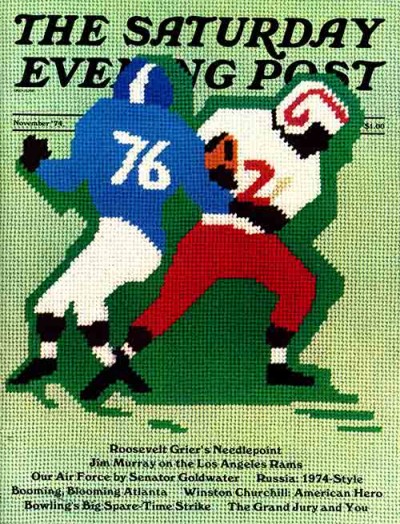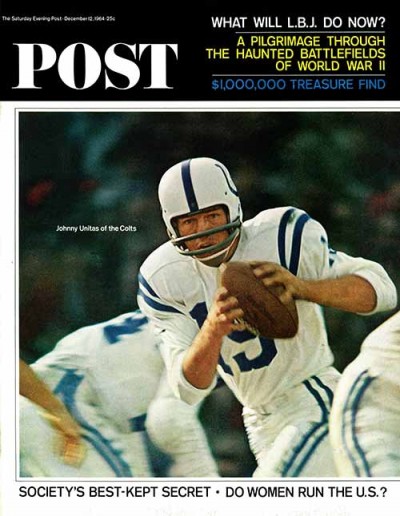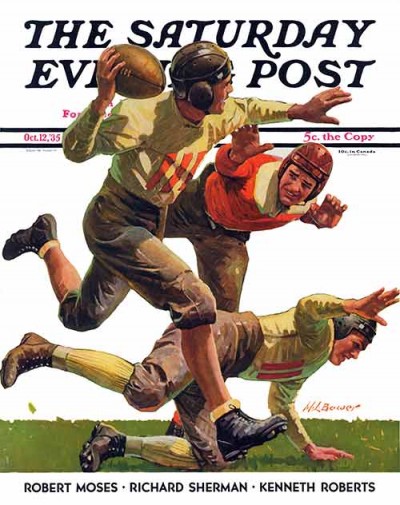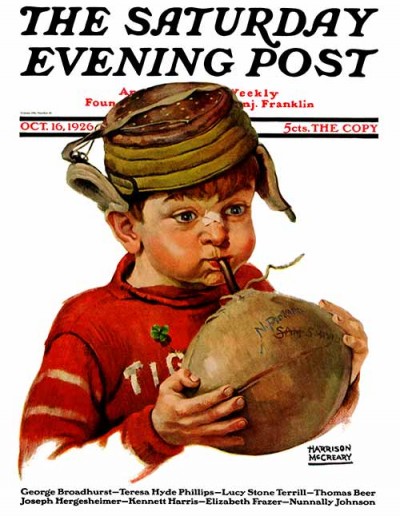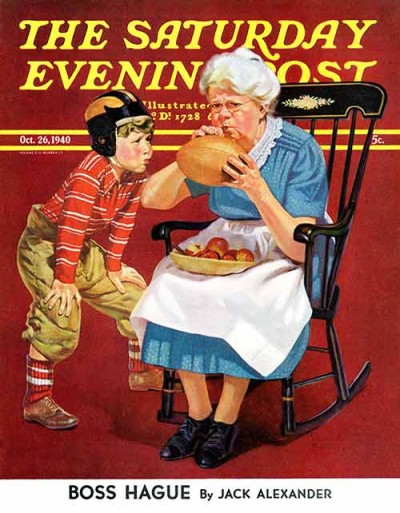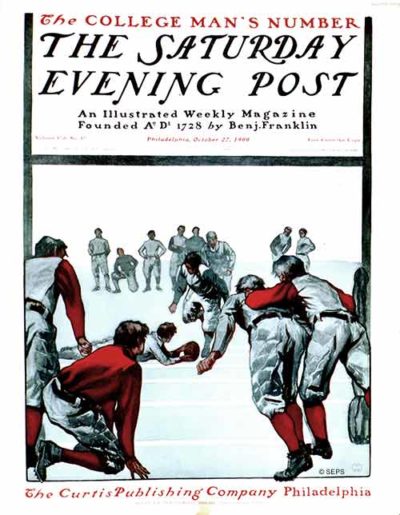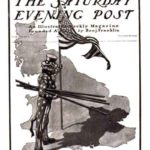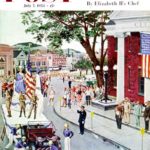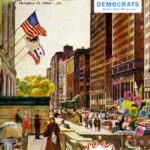Cover Gallery: Setting Sail
Have the doldrums? These illustrations of schooners and sloops will buoy your spirits in no time.
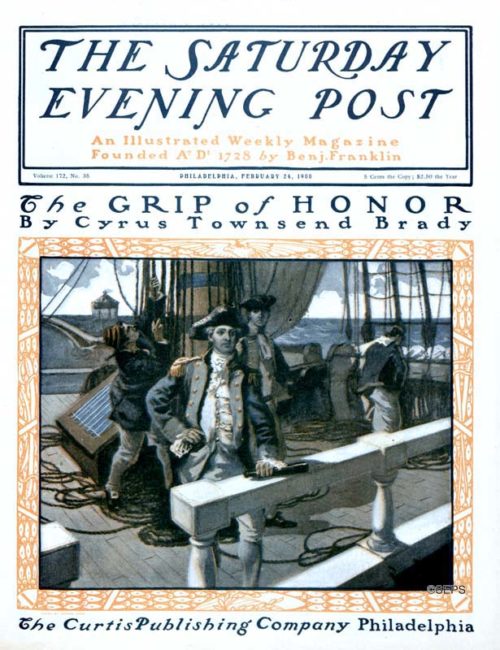
By George Gibbs
February 24, 1900
Illustrator George Gibbs was also an author, having written more than 50 books. Most of his books fell into the the spy and adventure genres, making him a perfect fit to paint this cover to accompany Cyrus Townsend Brady’s story. Gibbs was the illustrator of the first color cover of the Saturday Evening Post, which was published on December 30, 1899.
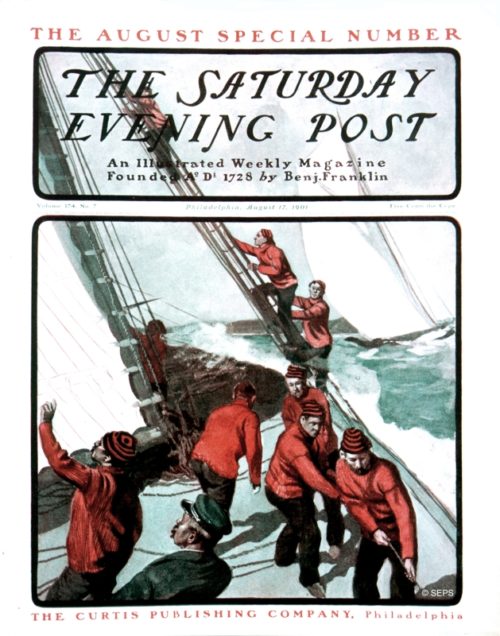
Artist Unknown
August 17, 1901
This cover by an unknown artist was drawn a year after sailing first debuted at the Olympics, in Paris, France in 1900. A Swiss sailor at the games, Hélène de Pourtalès, was the first ever female Gold medalist of the modern Olympic era, according to sailing.org.
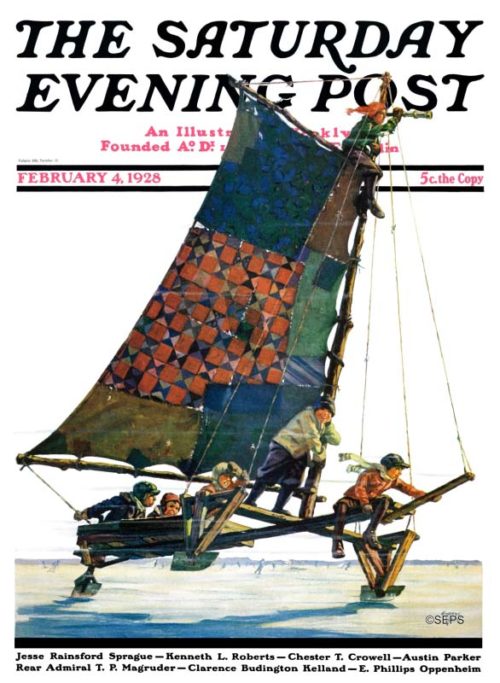
By Eugene Iverd
February 04, 1928
Artist Eugene Iverd grew up in Minnesota, giving him plenty of opportunities to observe ice boating. Iverd was known for painting indelible childhood moments of kids around the campfire, on the football field, in the swimming pool, or on a windswept, frozen lake.
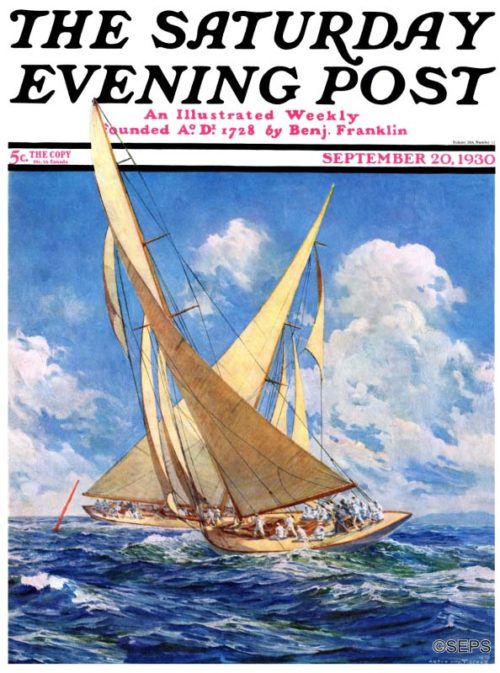
By Anton Otto Fischer
September 20, 1930
Anton Otto Fischer painted hundreds of covers and interior illustrations for the Post. He also illustrated books such as Moby Dick, Treasure Island, and 20,000 Leagues Under the Sea.
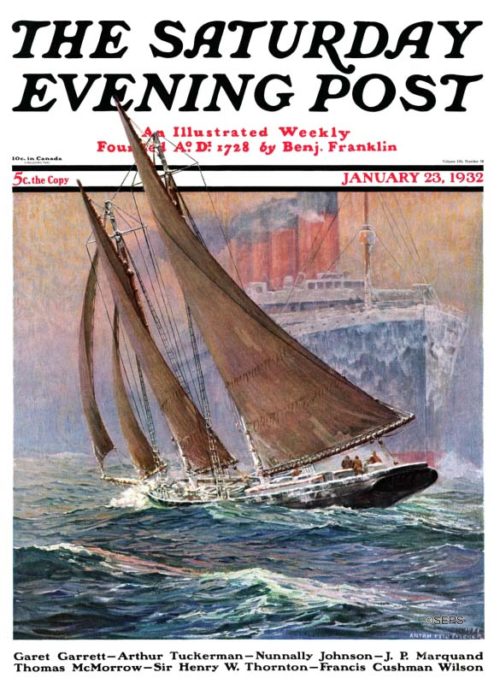
By Anton Otto Fischer
January 23, 1932
This Fischer illustration beautifully captures a moment of drama and also serves as a metaphor for the encroachment of the industrial age over the old ways.
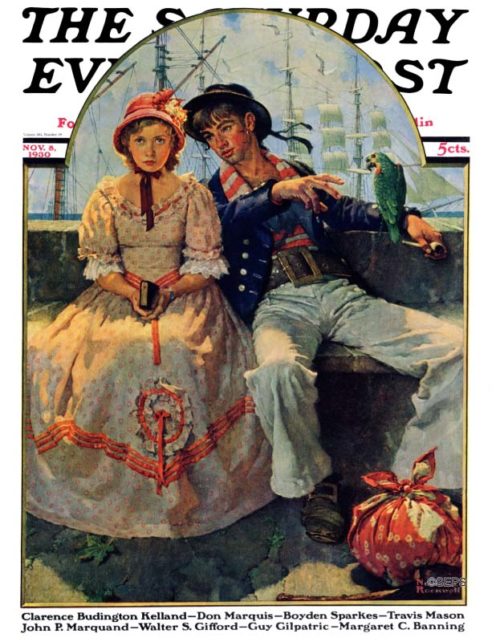
By Norman Rockwell
November 8, 1930
This illustration by Norman Rockwell is a departure from his typical “slice-of-America” scenes.
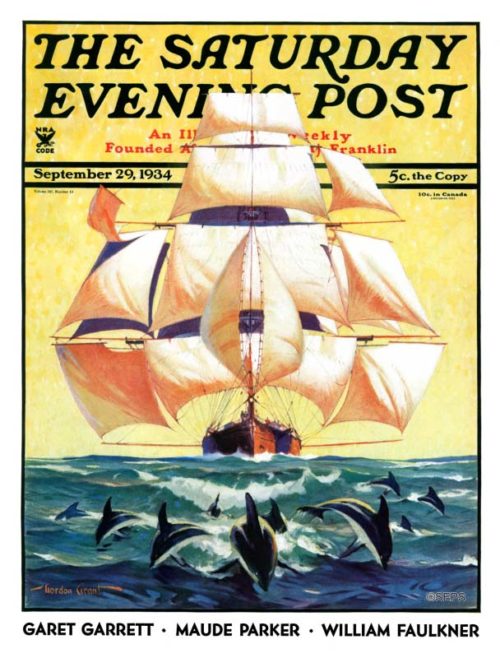
By Gordon Grant
September 29, 1934
Artist Gordon Grant was well known for his maritime covers, particularly his watercolor of the USS Constitution. He was also the cover designer for the first edition of the Boy Scout Handbook in 1911.
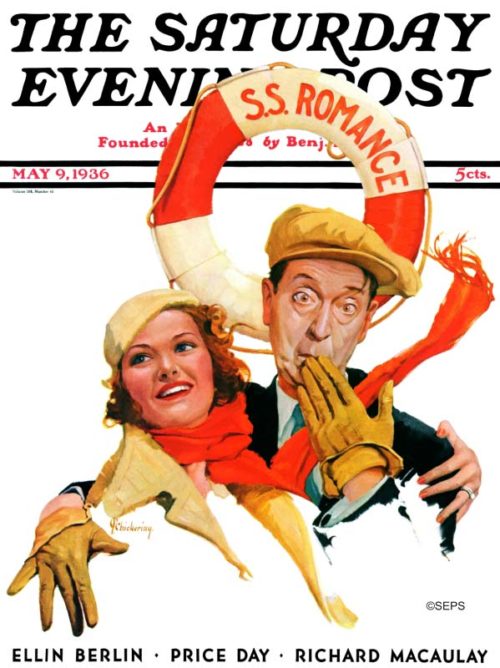
By Charles R. Chickering
May 09, 1936
Charles Chickering got his start as a medical illustrator of the wounded and dead during the World War I, and went on to a career as a postage stamp designer, before painting this winsome cover for the Post.
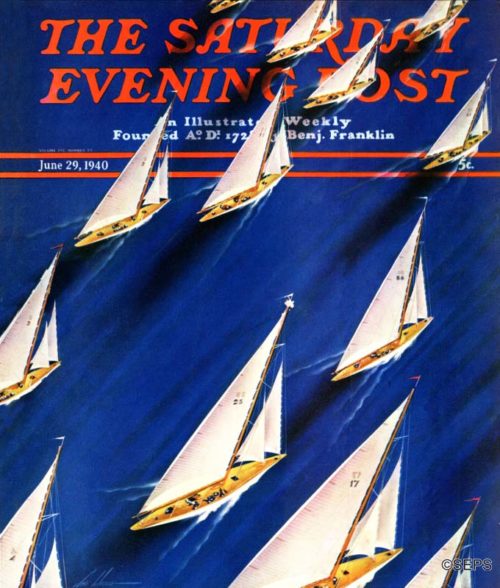
By Ski Weld
June 29, 1940
Ski Weld’s covers always depicted action – skiers jumping, snow geese flying, or, in this case, a stunning regatta of boats sailing.
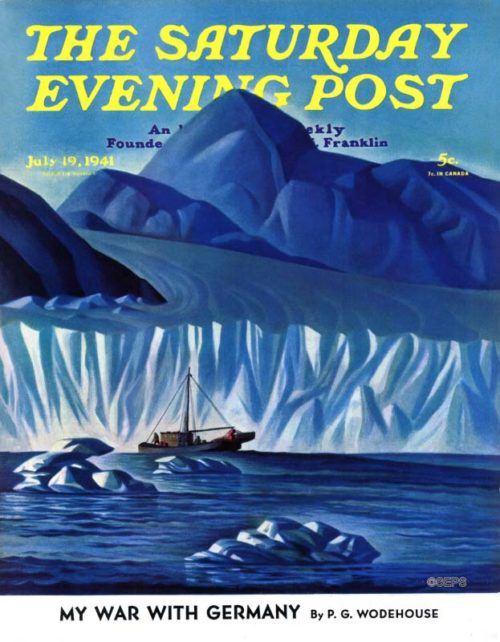
By Dale Nichols
July 19, 1941
Dale Nichols was best known for his paintings of red barns in rural, Midwestern landscapes. This northern scene was a departure from his usual subject matter.
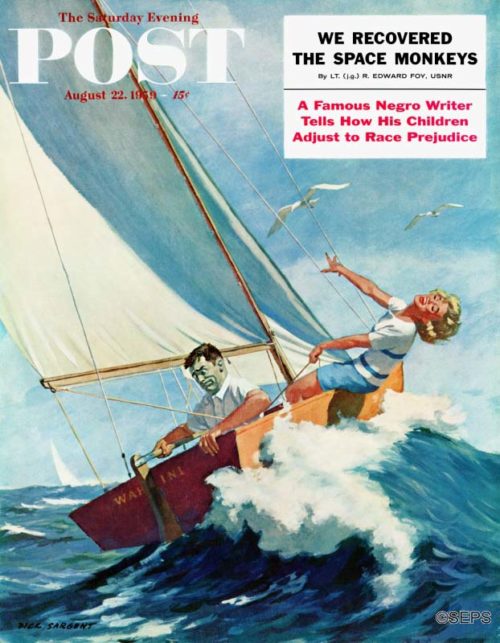
By Richard Sargent
August 22, 1959
Artist Richard Sargent (1911-1979) painted 47 Post covers between 1951 and 1962, when photographs were rapidly replacing magazine illustrations. Sargent often used a playful narrative style where one picture did indeed express a thousand words.
Covers: Celebrating Football
Rosey Grier’s Needlepoint
Rosey Grier’s Needlepoint
From November 1, 1974
This cover was designed by a needlepoint expert—Rosey (Roosevelt) Grier, a former pro for the L.A. Rams and the New York Giants.
According to this issue, Grier appeared on a talk show in the 1970s and “one of the guests brought her work and Rosey was so taken he spent—after she taught him—the entire program pulling yarn through canvas. Later, Rosey would haul his sewing to card games. If he had a good hand, out would come the needlework from under the table, an unusual alternative to the poker face.”
Grier at the 2008 Movieguide Faith and Value Awards Gala.
Photo from lukeford.net
Johnny Unitas by Leifer Neil
Johnny Unitas
by Leifer Neil
From December 12, 1964
Widely considered one of the NFL all time greats, Johnny Unitas of the Baltimore Colts appeared on the cover in December 1964. By this time, photographs had replaced work by artists that the Saturday Evening Post was so known for. Not that photographers aren’t artists, as this great shot by Leifer Neil shows.
The article in this issue was ironically called, “The Runaway Colts.” This referred to an outstanding season in 1964, one of Unitas’ (and the Colts’) best. The title has no bearing on “Bob Irsay’s Midnight Ride,” abandoning Baltimore for Indianapolis, which didn’t occur until 1984. Although he had been retired for a decade by then, Unitas and fellow players were outraged by the move. Unitas passed away in 2002.
“Quarterback Pass” by Maurice Bower
“Quarterback Pass”
by Maurice Bower
From October 12, 1935
Artist Maurice Bower was brilliant at capturing moments of high-energy action, as this 1935 cover will attest to. Other great examples of this were Bower’s many covers of another kind of athlete: horses. Galloping, muscles straining, nostrils flaring and manes flying—see “Maurice Bower’s Horse Power” from 2009.
“Inflating Football” by Harrison McCreary
“Inflating Football”
by Harrison McCreary
From October 16, 1926
Equipment sure has changed since the Roaring Twenties. For one thing, you needed a good set of lungs just to keep the ball inflated. Secondly, it is hard to imagine the helmet provided much protection. A really cute touch to this illustration by artist Harrison McCreary is the 4-leafed-clover pinned to the boy’s sweater for luck. Apparently, the need for a good set of lungs continued into the 1940s—see below.
“Grandma and Football” by Russell Sambrook
“Grandma and Football”
by Russell Sambrook
From October 26, 1940
In this 1940 cover, the helmet looks a bit more sophisticated, but that ball still needs to be inflated the hard way. If I were this young man, I would do it myself and let grandma get on with her apple peeling. I don’t know how the game will turn out, but something tells me a rockin’ apple pie is in his future.
“College Man’s Number” by George Gibbs
“College Man’s Number, 1900”
by George Gibbs
From October 27, 1900
The Saturday Evening Post started out as a newspaper. It didn’t sport a cover and start looking like a magazine until 1899. So, with a virtually new format, artist George Gibbs paints a football cover. Gibbs did several early Post covers as well as inside illustrations and covers for other prominent magazines of the time such as The Ladies Home Journal and Redbook.
We hope you enjoyed our multi-decade gridiron salute and have a great time watching the Super Bowl!
Classic Covers: Old Glory
Uncle Sam makes an appearance with the U.S. flag on the July 13, 1901, cover, staking the flag into Britain with steel bars, representing the expansion of “metallurgic establishments” by one J. P. Morgan into that country. That simple black and white effort by artist George Gibbs was only the beginning of Old Glory’s numerous appearances on the cover of The Saturday Evening Post.
The summer classic, a much more colorful version, is John Falter’s Family Portrait on the Fourth, featuring the whole family, from great-grandma to the newest baby, posing for a photographer with the stars and stripes as a backdrop hanging from the front porch. You’re bound to recognize a couple of relatives from this one.
Another summertime theme, and another Falter offering, is the 1960 cover of Michigan Avenue, Chicago, where the flag waves over dog walkers, balloon sellers, and tourists taking photos. Nothing says summer like the American flag flying, waving in the breeze.
Naturally, the flag was a popular theme during the WWII years. Etched in our collective memory is Rockwell’s Rosie the Riveter, a tough-looking gal wielding equipment previously handled only by men, and the huge stars and stripes behind her leave no doubt for whom she toils. Another 1943 cover, this time by Rockwell neighbor John Atherton, shows the American flag leading the way in the breeze with the flags of our allies against an appropriately darkening sky.
The flag waved merrily in many Post renditions of Fourth of July parades, such as the Hillville City parade depicted in the July 5, 1958, cover by artist Ben Prins. Never mind that they had to stop and fix a flat tire on the vehicle pulling the float, Lady Liberty and her Boy Scouts hold fast to the flag for all to salute.
Oddly enough, our most striking cover of Old Glory is from a Post artist who did mostly landscapes, John Clymer. No baseball games, no soldiers, no schoolrooms decorated by a flag in the back, just a waving close-up of our beautiful colors. Perfect for Flag Day.
